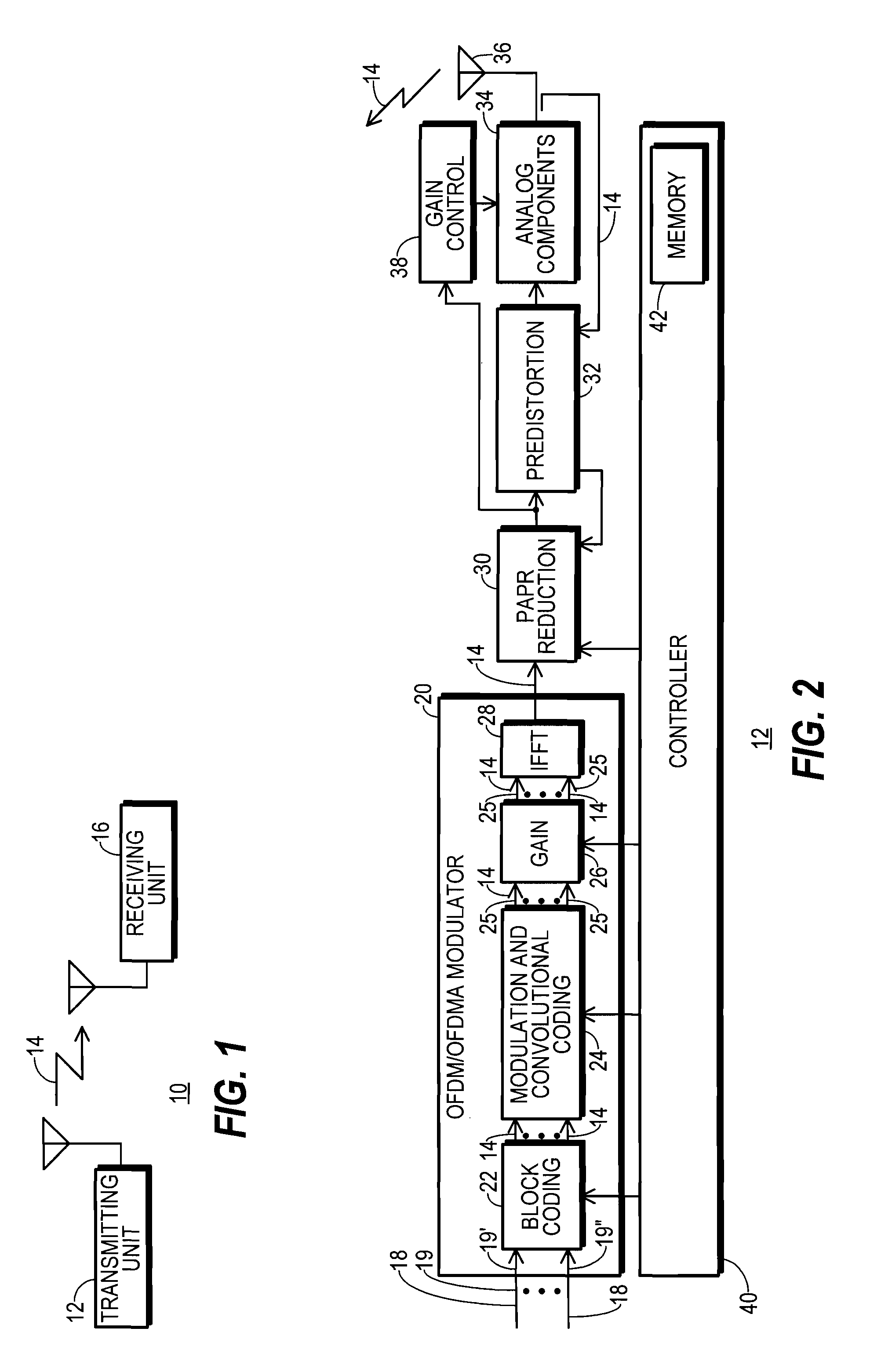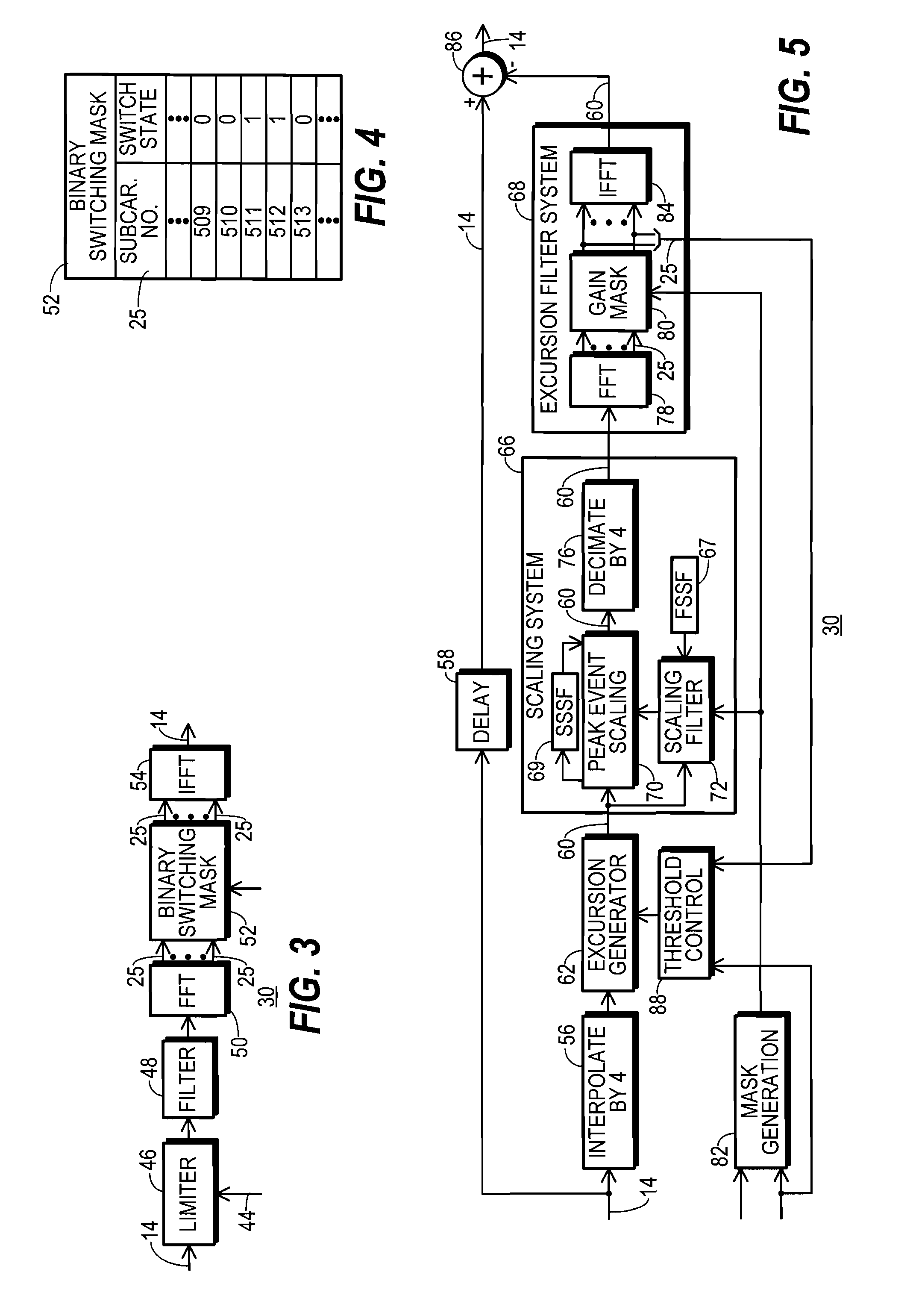Transmitting unit that reduces PAPR and method therefor
a technology of transmitting unit and papr, applied in the field of communication systems, can solve the problems of reducing the frequency range of communication signals, reducing the design goal of the transmitting unit, and requiring the transmission unit to meet the design goal
- Summary
- Abstract
- Description
- Claims
- Application Information
AI Technical Summary
Benefits of technology
Problems solved by technology
Method used
Image
Examples
first embodiment
[0046]FIG. 3 shows a block diagram of PAPR reduction section 30. In accordance with this embodiment, the version of communication signal 14 provided by modulator 20 is applied to a limiter 46 which passes all samples exhibiting a magnitude below a threshold 44 without altering the samples, and substitutes the threshold 44 magnitude for any samples exhibiting a magnitude greater than or equal to threshold 44. Threshold 44 is specified by controller 40 (FIG. 2). This limiting operation clips all peaks in communication signal 14 that exceed threshold 44, but also introduces spectral regrowth outside the allocated frequency band for communication signal 14 while adding noise power throughout the allocated frequency band. Although not specifically shown, the sampling rate of communication signal 14 may be increased prior to limiter 46 to accommodate the spectral regrowth. Controller 40 may increase threshold 44 to decrease the amount of PAPR reduction achieved and to decrease the amount ...
second embodiment
[0050]FIG. 5 shows a block diagram of PAPR reduction section 30. This embodiment of PAPR reduction section 30 is more sophisticated than the version depicted in FIG. 3. This FIG. 5 embodiment of PAPR reduction section 30 is more compatible with the teaching of U.S. Publication No. 2007 / 0254592, but achieves improvements in power consumption.
[0051]In accordance with this FIG. 5 embodiment of PAPR reduction section 30, the version of communication signal 14 provided by modulator 20 is applied to an interpolator 56 and to a delay element 58. Interpolator 56 may be configured to increase the sampling rate of communication signal 14 by a factor of four to accommodate an extended-bandwidth excursion signal 60 generated downstream.
[0052]In one embodiment, the interpolation function may be moved to IFFT section 28 in modulator 20 (FIG. 2). In this embodiment, to increase the sampling rate by a factor of four the block size of the IFFT operation is increased by a factor of four, and the bloc...
PUM
 Login to View More
Login to View More Abstract
Description
Claims
Application Information
 Login to View More
Login to View More - R&D
- Intellectual Property
- Life Sciences
- Materials
- Tech Scout
- Unparalleled Data Quality
- Higher Quality Content
- 60% Fewer Hallucinations
Browse by: Latest US Patents, China's latest patents, Technical Efficacy Thesaurus, Application Domain, Technology Topic, Popular Technical Reports.
© 2025 PatSnap. All rights reserved.Legal|Privacy policy|Modern Slavery Act Transparency Statement|Sitemap|About US| Contact US: help@patsnap.com



